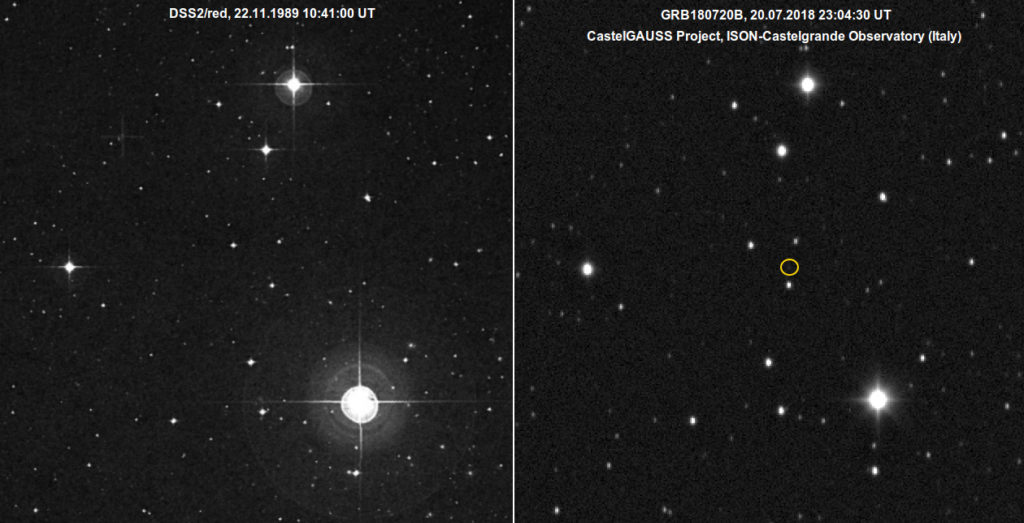GAUSS and KIAM collaborators, working in the CastelGauss Project at the Astronomical Observatory of Castelgrande (in Basilicata Region, Italy, part of the ISON Network), have performed an optical observation of the field of GRB 180720B on July 20, 2018, detecting optical afterglow with their 22-cm aperture telescope and obtaining a large number of images.
The coordinates of the identification are J2000 00:02:06.792 -02:55:04:99 (with uncertainties of about 0.5 arcsec).
In astronomy, gamma-ray bursts (GRBs) are powerful electromagnetic events consisting of extremely energetic explosions in the universe that can last from a few seconds to several hours and can be observed in distant galaxies, remaining very bright. When a GRB phenomenon occurs, first there is a flash of gamma rays and then, after the initial burst, an “afterglow” produced by fading emissions at longer wavelenghts created by collisions between neutron stars, which is quite difficult to catch.
Gamma-ray bursts afterglows, together with space debris and asteroids surveillance, are the main observation objectives of the International Scientific Optical Network (ISON), of which CastelGauss Observatory is part.
More information can be found here: GCN Circular

Images of the event GRB 180720B: the afterglow is on the right (surrounded by the yellow circle)
